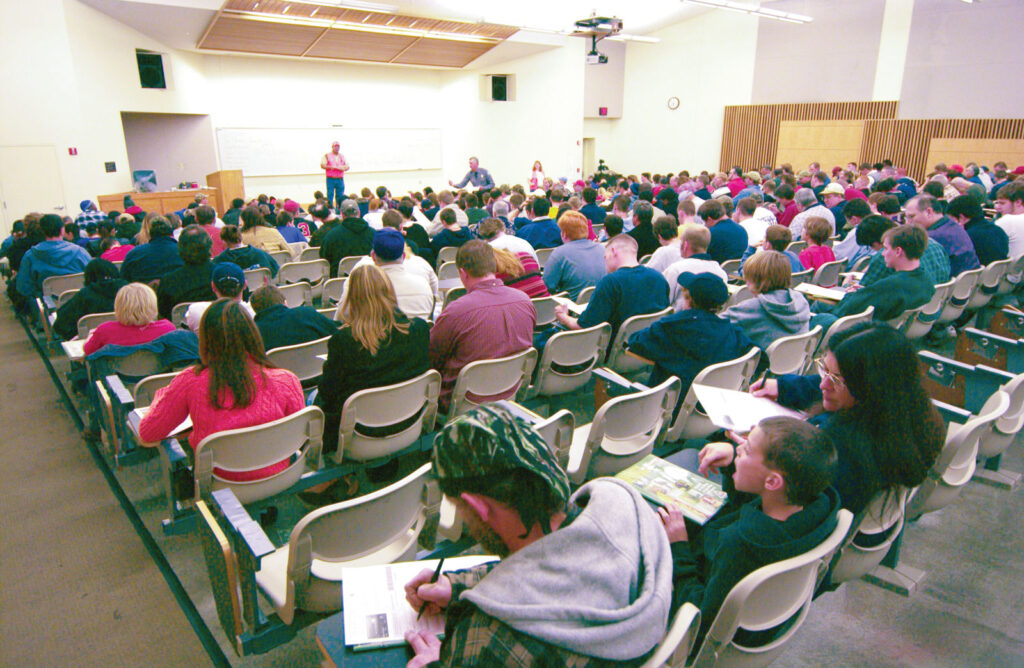Missouri Hunter Education sees rise in school participation.
Through the Hunter Education program, the Missouri Department of Conservation not only teaches students of various ages how to hunt safely but also helps to create new generations of responsible hunters.
In recent years, the program has seen a rise in online classes and participation among Missouri school districts, says Justin McGuire, the Hunter Education and Shooting Range Coordinator with the Missouri Department of Conservation.
In 2023, there were 108 in-person hunter classes in the Central Region of Missouri (mid-Missouri), certifying 1,526 individuals. Fifty-eight of those classes, and 945 of those students, were taught in schools as a part of the in-school curriculum.
McGuire says that topics covered by the department’s courses range from learning firearm safety and first aid to understanding Missouri wildlife and the role a hunter plays. He says the program has helped reduce the number of hunting-related accidents, along with improving relationships between hunters and landowners. McGuire has been associated with the program since 2017, becoming its coordinator in 2019.
He says the first benefit of the hunter-education program is firearm safety.
“Anytime firearms are being implemented as a tool in an activity, whether that activity be hunting, or that activity be recreational shooting, safety is always a top priority,” McGuire explains.
When it comes to in-person courses in firearm safety, students learn information regarding the proper handling of firearms, but also the operations of the firearm. This includes training on how to handle different types of firearms, their loading and unloading process, and how to cross obstacles safely while carrying a firearm.
“It (the program) has a lot of different benefits aside from safety,” he adds. “But certainly, safety is a big component.”
In addition to firearm safety, the program also teaches other elements of Hunter Education such as biology, ecology, and ethics.
“That’s why it’s not called necessarily hunter safety or something like that,” McGuire said. “We call it Hunter Education because it really is a holistic approach to creating passionate, involved, safe hunters.”
Much of the program’s curriculum focuses on the population dynamics of wildlife and the role hunters play in managing the population’s size.
“It (the program) really does dive deep into who we are as hunters,” McGuire notes. “And what our role is as hunters, and how we serve the health of the populations (of wildlife) that we pursue.”
The Hunter Education program is divided by age, with classes for students from 11 through 15 years of age, and then students who are 16 and older. Missouri residents born before Jan. 1, 1967, are not required to take the course. The program was first founded in 1957, starting as an optional course, before becoming mandatory in 1988. Around 1988, McGuire said that it was not unusual to see in-person classes of 300 people, especially in larger areas such as Kansas City and St. Louis.
“Over the course of time, our methods for completing Hunter Education have changed and evolved,” he says.
Students 16 and older can take the course online. Online-only courses were first offered to students in 2017, with interactive online courses further added in 2022. McGuire says both courses are effective and fun, but the interactive course was designed with newer learners in mind. The interactive course implements “gamification” where students can choose a character who looks like them and then choose a game species that they’re interested in hunting.
In 2023, 60 percent of certificates came from students 16 and older via online-only courses. However, the introduction of online courses has reduced the demand for in-person courses.
“Since online only became an option several years ago,” McGuire says. “It has certainly reduced the size of our in-person classes.”
Currently, McGuire says that the Department usually awards completed certificates in the range of 25,000 to 26,000 certificates per year, with the Department awarding almost 27,000 certificates in 2023.
“We do about 5,500 educational programs a year in the state of Missouri,” he said. “And over 300,000 thousand people attend those 5,500 programs.”
Furthermore, more than 7,000 of the certificates came from 241 participating Missouri schools as a part of an in-school curriculum. The number of certificates awarded through the school curriculum has been steadily increasing, going up by 48 percent since 2018.
“Which we are very proud of,” McGuire says. “Getting this (program) in front of school kids, to give them some perspective and some context around firearm safety and hunting.”
In 1989, the number of certified students reached 500,000. And by 2006, that number had risen to one million.
“We have done a total of over 1.4 million certifications since we started the program,” McGuire said. “… We’re pretty proud of that number.”
In general, McGuire sys that the Department provides numerous classes to teach different elements of hunting and fishing. These range from introductory to more advanced courses. Anyone interested in taking one of the courses can sign up by visiting mdc.mo.gov/events. From there, use the “contact us” feature and select a training course by their county.
1957 – The Hunter Education program was established as an optional course.
1988 – The program became mandatory.
1989 – The number of certified students reached 500,000.
2006 – The number of certified students reached 1 million.
2017 – Online-only courses became available.
2022 – Interactive online courses were also added.












